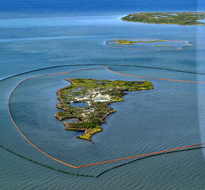
When the well beneath BP’s Deepwater Horizon rig blew out in 2010, 4.9 million barrels of oil poured into the waters of the Gulf of Mexico. Despite the massive clean-up effort, significant quantities of oil made their way to into region’s coastal ecosystems.
A 2011 study published for the Proceedings of the National Academy of Sciences (PNAS), “Genomic and Physiological Footprint of the Deepwater Horizon Oil Spill on Resident Marsh Fishes,” sampled tissues from adult Gulf killifish in Louisiana’s marshes throughout the first four months of the spill to track the oil’s effects on the ecosystem.
The study’s results include:
- While sampled water and tissues didn’t show abnormally high levels of oil, there was genetic evidence of polycyclic aromatic hydrocarbons (PAH) exposure, which can lead to cardiovascular failure in fish. While no such diseases were found in the analyzed embryos, the researchers point out that even at this level of intoxication, the embryonic killifish are at risk in adulthood.
- Through genetic analysis, researchers determined that killifish had sustained “persistent exposure to sub-lethal concentrations of crude oil components consistent with negative population-level impacts in fish, sea otters, and harlequin ducks following the Exxon Valdez oil spill.”
- Ion transport genes allow killifish to tolerate varying salinity levels of coastal waters; fish at the sample sites showed changes in multiple ion-transport genes, potentially reducing their ability to “adjust physiologically to natural stressors.”
- Evidence of oil exposure was shown by several gene ontology (GO) categories that play a role in DNA repair, immune response, and reproduction.
“Although body burdens of toxins are not high, consistent with reports indicating that seafood from the Gulf of Mexico is safe for consumption, this does not mean that negative biological impacts are absent,” the researchers write. They recommend that future research look at the long-term impact of “high concentrations of hydrocarbons in sediments [that] may provide a persistent source of exposures to organisms resident in Louisiana marshes.”
